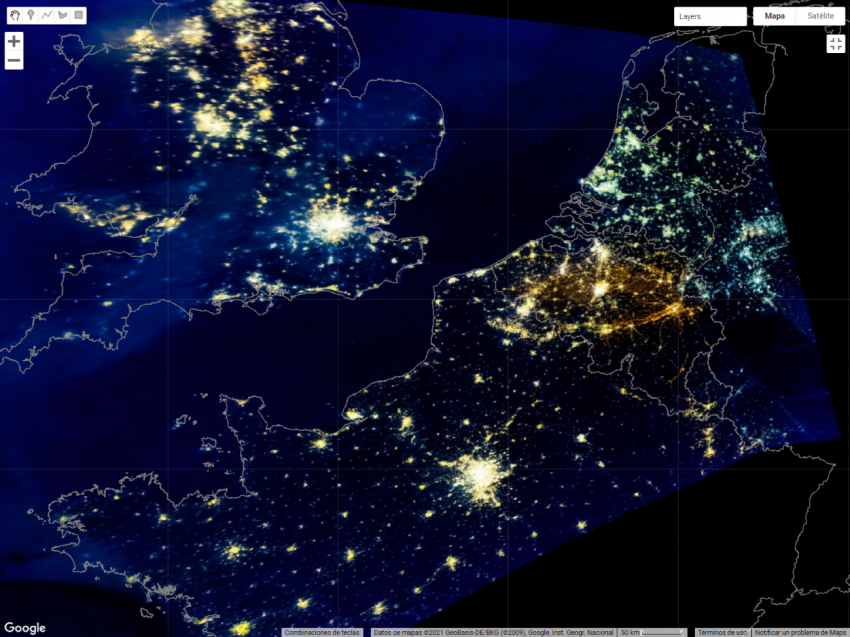They warn about the environmental impact of replacing public lighting with LEDs
2022/10/19 Galarraga Aiestaran, Ana - Elhuyar Zientzia Iturria: Elhuyar aldizkaria

In a study led by Exeter University, the spectrum of night lights has been analyzed and it has been reported that blue light is spreading significantly, warning of the negative consequences that this entails for both humans and other living beings. Research has been published in the journal Science.
Researchers have used images of the International Space Station cameras and the Suomi NPP satellite to get a full picture of light pollution. They analyse the evolution of spectrum composition between 2012-2013 and 2014-2020 and show that high-pressure sodium lights (orange color) have been decreasing, while luminaires with white LEDs and blue emission have increased.
Developments are uneven in all countries, for example, among those with more LEDs are Italy and Spain, and at the other end are Austria and Germany.
It has been explained that LED lights have a much more negative environmental impact than those of sodium, especially blue light. And that's what's spreading the most in Spain. In particular, it has focused on the melatonin cycle disorder (related to sleep), the spectacle of stars and the behavior of insects and bats.
In replacing lighting, researchers call for these conclusions to be taken into account and suggest that there are other ways to achieve the energy and economic benefits provided by LED lights, while reducing damage to ecosystems. They also point to the need to continue collecting data.

Gai honi buruzko eduki gehiago
Elhuyarrek garatutako teknologia




